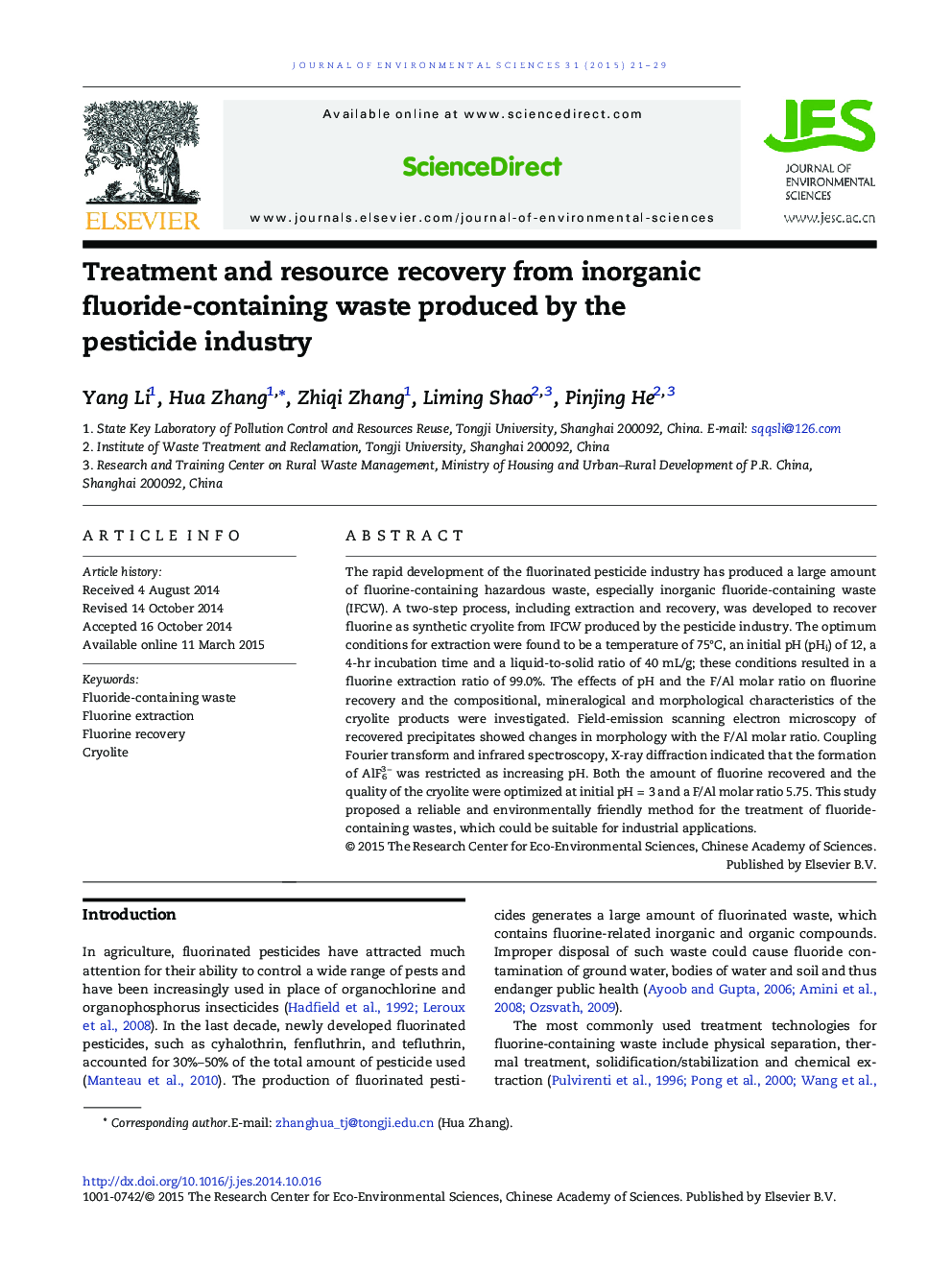| کد مقاله | کد نشریه | سال انتشار | مقاله انگلیسی | نسخه تمام متن |
|---|---|---|---|---|
| 4454072 | 1620822 | 2015 | 9 صفحه PDF | دانلود رایگان |
The rapid development of the fluorinated pesticide industry has produced a large amount of fluorine-containing hazardous waste, especially inorganic fluoride-containing waste (IFCW). A two-step process, including extraction and recovery, was developed to recover fluorine as synthetic cryolite from IFCW produced by the pesticide industry. The optimum conditions for extraction were found to be a temperature of 75°C, an initial pH (pHi) of 12, a 4-hr incubation time and a liquid-to-solid ratio of 40 mL/g; these conditions resulted in a fluorine extraction ratio of 99.0%. The effects of pH and the F/Al molar ratio on fluorine recovery and the compositional, mineralogical and morphological characteristics of the cryolite products were investigated. Field-emission scanning electron microscopy of recovered precipitates showed changes in morphology with the F/Al molar ratio. Coupling Fourier transform and infrared spectroscopy, X-ray diffraction indicated that the formation of AlF63 − was restricted as increasing pH. Both the amount of fluorine recovered and the quality of the cryolite were optimized at initial pH = 3 and a F/Al molar ratio 5.75. This study proposed a reliable and environmentally friendly method for the treatment of fluoride-containing wastes, which could be suitable for industrial applications.
Figure optionsDownload as PowerPoint slide
Journal: Journal of Environmental Sciences - Volume 31, 1 May 2015, Pages 21–29
